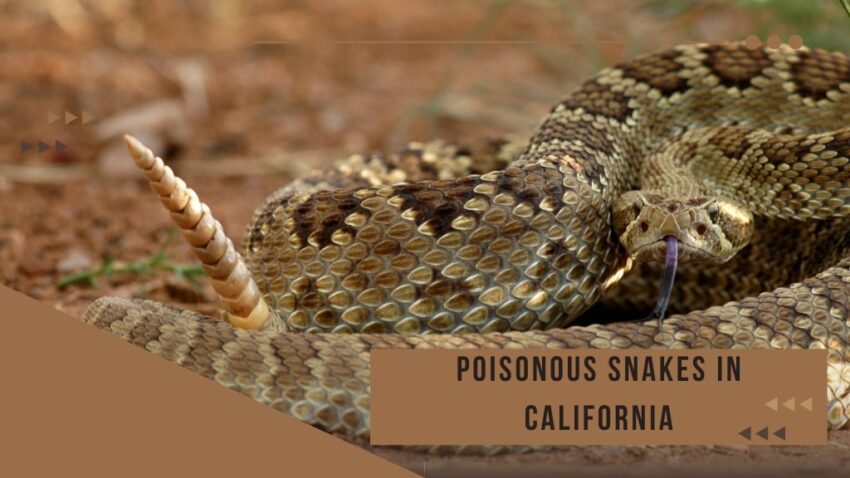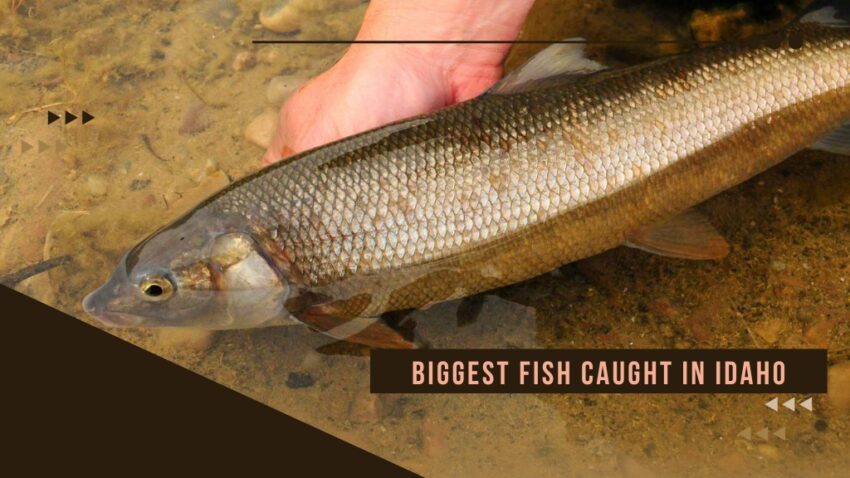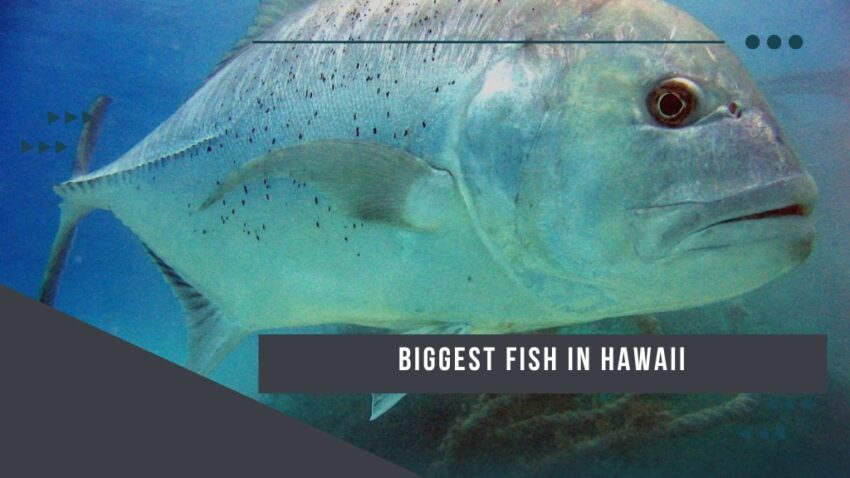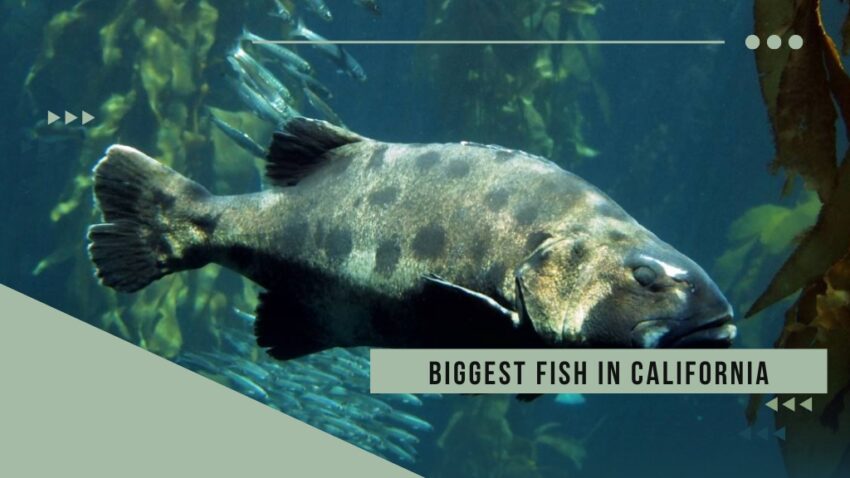California’s wildlife is as diverse as its landscapes, and hidden among its natural wonders are some of the most intriguing creatures: venomous snakes. While the thought of encountering these serpents may make your heart race, learning about them can be a fascinating adventure.
We’ll dive into the captivating world of California’s top 6 venomous snakes, uncovering their unique characteristics and sharing some fun facts along the way. So, let’s slither into the realm of these venomous reptiles and explore what makes them such intriguing inhabitants of the Golden State.
California’s 6 Notorious Snakes
1. Western Diamondback Rattlesnake
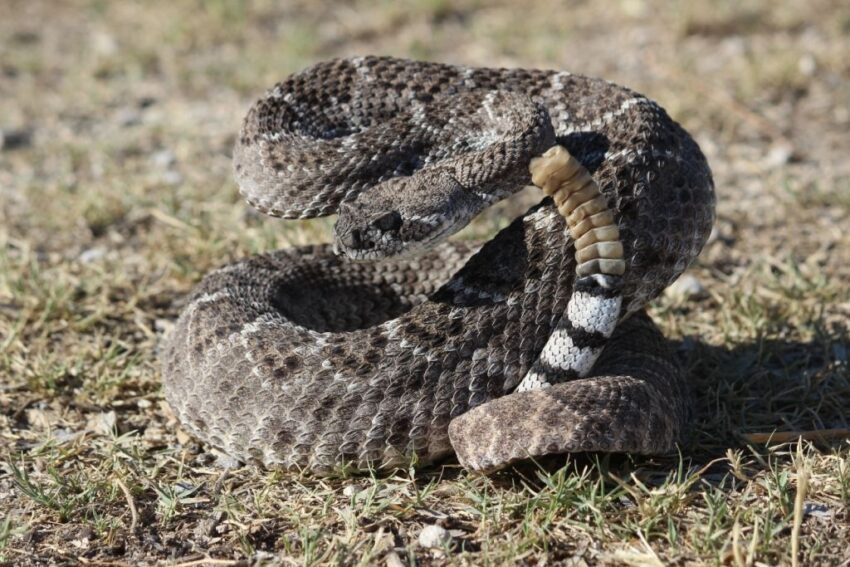
The Western Diamondback Rattlesnake is perhaps the most iconic venomous snake in California. With its distinctive diamond-shaped patterns and rattle-tipped tail, it’s hard to miss. Found throughout the state, this snake possesses potent venom and a notorious reputation. Fun Fact: The rattlesnake’s rattle is made up of segments that add on each time it sheds its skin. So, the more segments you hear, the older and wiser the snake!
2. Southern Pacific Rattlesnake
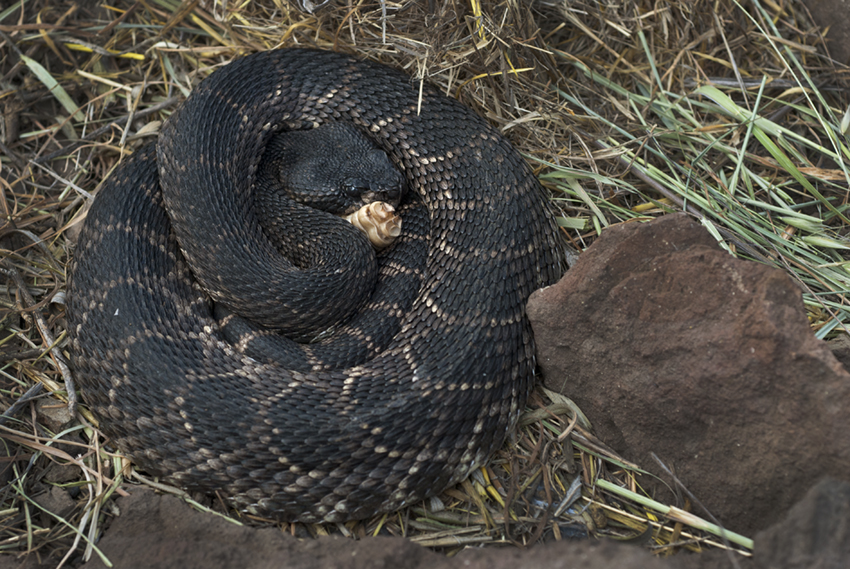
The Southern Pacific Rattlesnake is another venomous snake that calls California home. This snake is known for its striking colors, including shades of brown, gray, and olive, along with distinct crossbands. While its venom can be dangerous, this species generally prefers to retreat rather than confront humans. Fun Fact: The Southern Pacific Rattlesnake has heat-sensing pits between its eyes and nostrils, which helps it locate warm-blooded prey even in darkness.
3. Mojave Rattlesnake
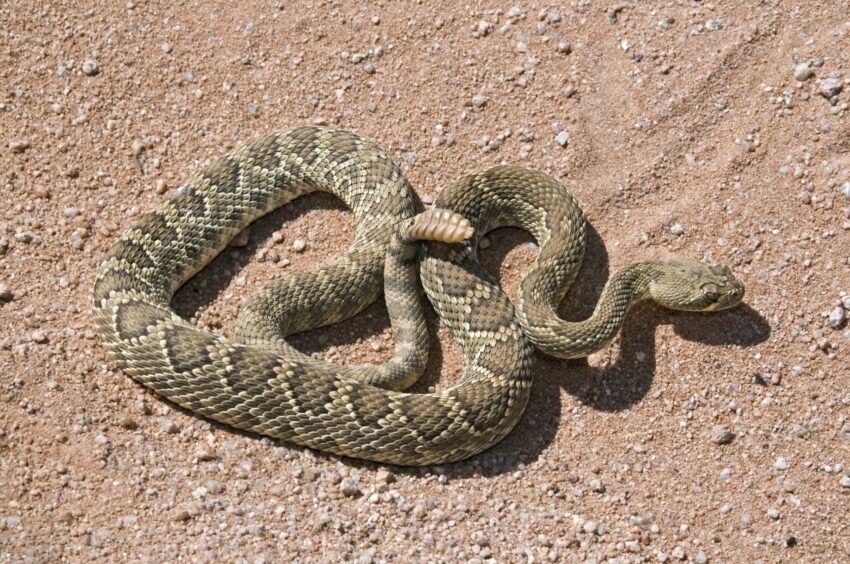
The Mojave Rattlesnake, with its subtle beauty, is a venomous snake that resides in the deserts of California. It showcases a unique greenish-gray coloration, along with dark diamond-shaped patterns. This snake possesses one of the most potent venoms, but it’s not typically aggressive toward humans unless provoked. Fun Fact: The Mojave Rattlesnake has a heat-sensitive “pit” located on each side of its face, allowing it to accurately strike at warm-blooded prey, even in low-light conditions.
4. Northern Pacific Rattlesnake
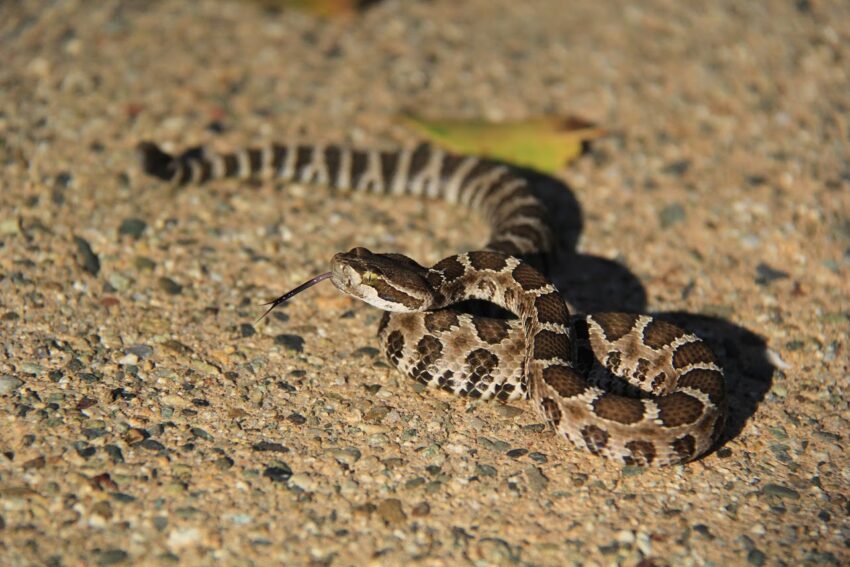
As the name suggests, the Northern Pacific Rattlesnake can be found in the northern regions of California. This snake features a combination of dark blotches and brownish-red saddles along its back. It’s often seen basking in the sun on rocky outcrops. Fun Fact: Rattlesnakes are excellent swimmers and can even cross rivers or lakes by floating on top of the water, using their tails as a paddle.
5. Sidewinder
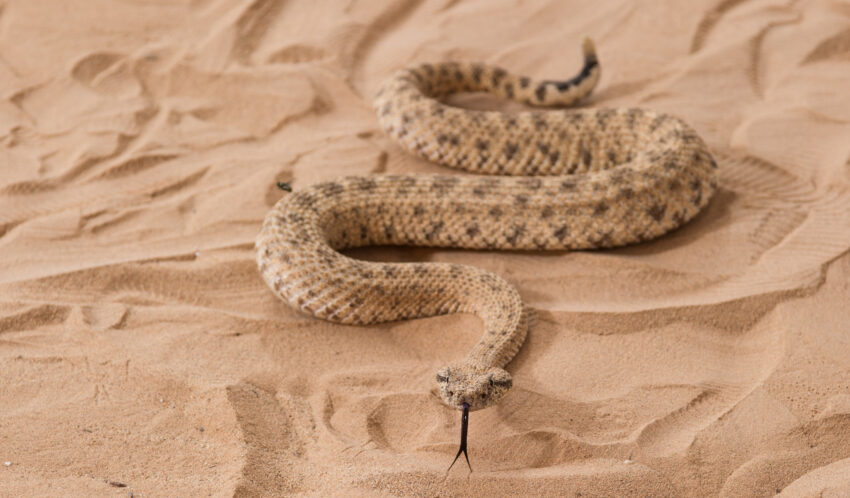
The Sidewinder is an incredibly unique and fascinating venomous snake found in California’s desert regions. This snake’s peculiar way of moving sideways, which gives it its name, is a result of its specialized adaptation to the sandy environment. By moving sideways, the snake leaves distinctive J-shaped tracks in the sand. Fun Fact: The Sidewinder can bury itself beneath the sand, leaving only its eyes and nostrils exposed. This behavior helps it escape the scorching desert heat while patiently waiting for prey.
6. Speckled Rattlesnake
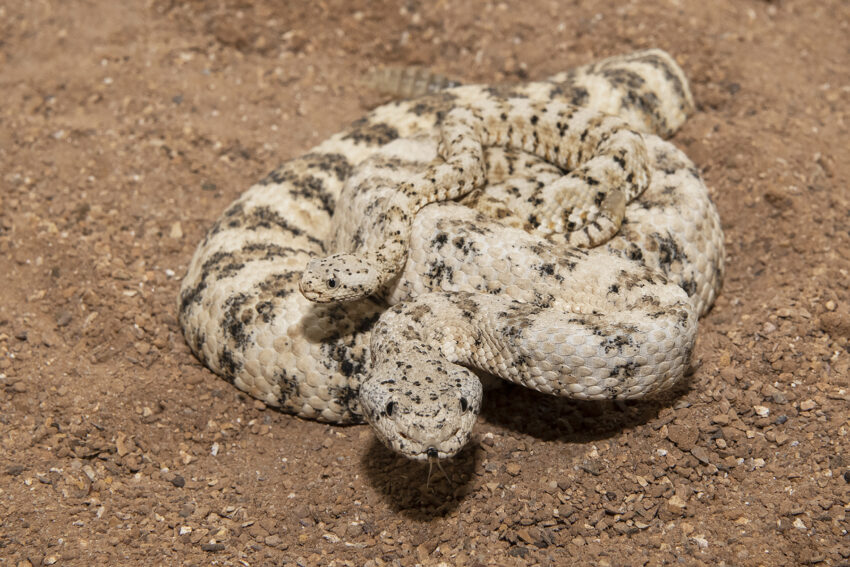
The Speckled Rattlesnake, also known as the ‘San Diego Speckled Rattlesnake,’ is a venomous pit viper endemic to Southern California. It showcases a striking color pattern of dark speckles over a lighter background. Though smaller in size compared to other rattlesnake species, it possesses potent venom. Fun Fact: Rattlesnakes, including the Speckled Rattlesnake, have hollow fangs that retract when not in use. When they strike, the fangs extend to inject venom into their prey.
Other Useful Information About the Venomous Snakes in California
If you’re looking for additional details about the poisonous snakes in CA we mention in this article, you’re in luck! You can consult the table below for more information, including the snakes’ size, diet, behavior, and defense mechanisms, as well as their range and habitat. This allows for a more comprehensive understanding of these venomous vipers which can definitely come in handy, so take a look:
| Snake Species | Size | Diet | Behavior and Defense Mechanisms | Range and Habitat |
|---|---|---|---|---|
| Western Diamondback Rattlesnake | Up to 7 feet | Small mammals, birds, lizards | Rattle warning, camouflage, defensive strikes | Varied habitats including deserts and grasslands |
| Southern Pacific Rattlesnake | Up to 4 feet | Small mammals, birds, lizards | Warning hiss, defensive posturing, retreats rather than confronts | Woodlands, grasslands, coastal areas |
| Mojave Rattlesnake | Up to 4 feet | Small mammals, lizards, birds | Sidewinding locomotion, camouflage, aggressive when provoked | Desert regions, rocky areas |
| Northern Pacific Rattlesnake | Up to 4 feet | Small mammals, birds, amphibians | Passive and docile nature, hides in vegetation, defensive strikes | Woodlands, grasslands, mountainous regions |
| Sidewinder | Up to 2 feet | Small mammals, lizards, insects | Unique sideways movement, sand-dwelling, heat-seeking behavior | Desert regions, sandy areas |
| Speckled Rattlesnake | Up to 3 feet | Small mammals, lizards, birds | Camouflage, striking accuracy, prefers to retreat | Coastal sage scrub, chaparral habitats |
Conclusion
California’s venomous snakes may inspire both fear and awe, but they also contribute to the rich tapestry of the state’s natural heritage. From the iconic Western Diamondback Rattlesnake to the sidewinding Sidewinder, each snake brings its own distinct charm and fascinating adaptations.
While it’s important to exercise caution and respect their space, appreciating these serpents from a distance allows us to embrace the marvels of nature. So, the next time you venture into California’s wild lands, keep an eye out for these slithering wonders, knowing that their presence is a testament to the intricate beauty and delicate balance of our natural world.

